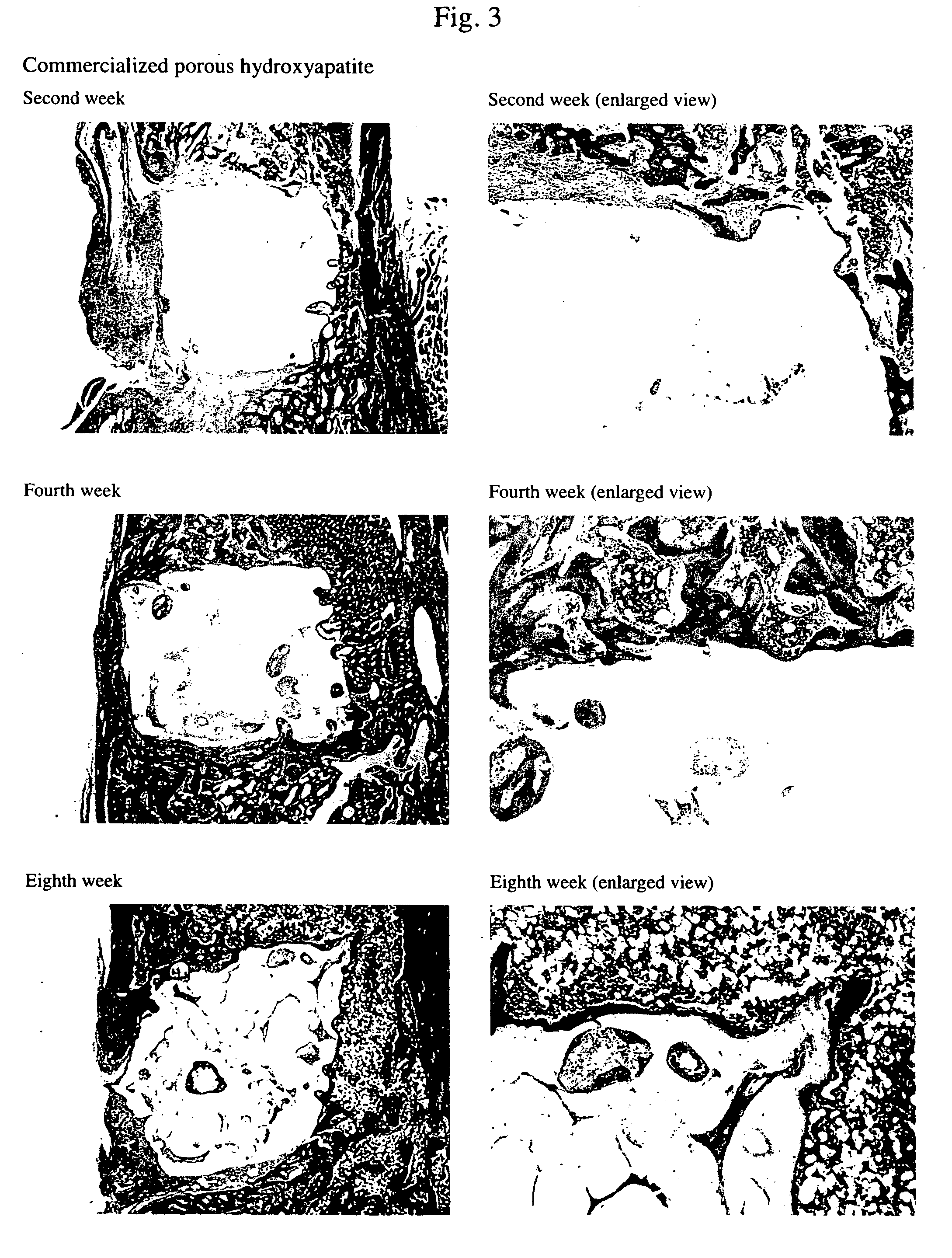Composite biomaterials
a biomaterial and composite technology, applied in the field of composite biomaterials, can solve the problems of homogenous incorporation of alginic acid into composites of hydroxyapatite and collagen, which has not yet been attempted, and achieves excellent bioadaptability and bone inductivity
- Summary
- Abstract
- Description
- Claims
- Application Information
AI Technical Summary
Benefits of technology
Problems solved by technology
Method used
Image
Examples
example 1
Production of Composite Biomaterials of Hydroxyapatite / Collagen / Alginate
1. Method
[0059] At the outset, 3 ml of physiological saline was added to 500 mg of HAp / Col composite powders, the resultant was mixed by a homogenizer until a homogenous mixture was obtained. An aqueous solution of 3% sodium alginate (1.5 ml) was then added thereto, and the resultant was further mixed until it became homogenous. HAp / Col composite powders (500 mg) synthesized by the method of Kikuchi et al (Biomaterials 22, 2000, pp. 1705-1711) were used as composites of hydroxyapatite and collagen (HAp / Col composites).
[0060] Subsequently, 80 μl of a 5M calcium carbonate suspension was added thereto, the resultant was mixed, and 100 mg of gluconic acid powder was then added thereto, followed by mixing.
[0061] The resulting mixture was immediately placed in the mold and then allowed to cure over the period of 45 minutes. This cured product was allowed to freeze at −20° C. for 12 hours and then lyophilized. Thu...
example 2
Experiment of Implantation into Rat Femurs
1. Method
[0063] A hole was provided in the distal part of a 10-week-old Wistar rat femur, and the implants prepared in Example 1 (2×2×5 mm) were implanted thereinto. The implants were taken out 2, 4, 6, and 8 weeks after the implantation and subjected to HE staining and toluidine blue staining. As controls, the following three kinds of substances were implanted to the distal part of the rat femurs and evaluated in the same manner as mentioned above. FIGS. 2 to 5 show the results of HE staining 2, 4, and 8 weeks after implantation of each sample.
[0064] (i) Commercialized sintered porous hydroxyapatite (2×2×5 mm, BONFIL, Mitsubishi Materials Corporation).
[0065] (ii) A compressed form of HAp / Col composite used in Example 1 (2×2×5 mm).
[0066] (iii) A solution of 3% sodium alginate powders (sodium alginate (500-600 cP), Wako Pure Chemical Industries, Ltd.) (physiological saline).
2. Results
1) The Implants of the Present Invention
[0067] A...
PUM
| Property | Measurement | Unit |
|---|---|---|
| porosity | aaaaa | aaaaa |
| porosities | aaaaa | aaaaa |
| porosities | aaaaa | aaaaa |
Abstract
Description
Claims
Application Information
 Login to View More
Login to View More - R&D
- Intellectual Property
- Life Sciences
- Materials
- Tech Scout
- Unparalleled Data Quality
- Higher Quality Content
- 60% Fewer Hallucinations
Browse by: Latest US Patents, China's latest patents, Technical Efficacy Thesaurus, Application Domain, Technology Topic, Popular Technical Reports.
© 2025 PatSnap. All rights reserved.Legal|Privacy policy|Modern Slavery Act Transparency Statement|Sitemap|About US| Contact US: help@patsnap.com



